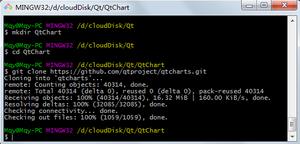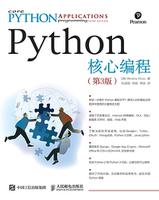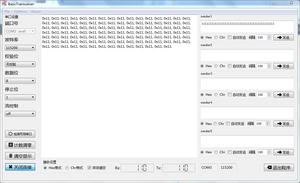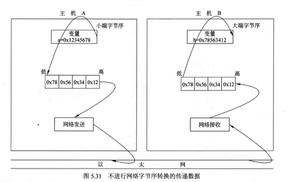【Python修炼记】MySQL之视图、触发器、事务、存储过程、函数

【目录】(其余均为了解知识)
一 视图
二 触发器
三 事务(掌握)
四 存储过程
五 函数
六 流程控制
七、索引理论
一、视图
1、什么是视图
视图是一个虚拟表(非真实存在),其本质是【根据SQL语句获取动态的数据集,并为其命名】,用户使用时只需使用【名称】即可获取结果集,可以将该结果集当做表来使用。
即 视图就是通过查询得到一张虚拟表,然后保存下来,下次可以直接使用,其实视图也是表
2、为何要用视图
使用视图我们可以把查询过程中的临时表摘出来,用视图去实现,这样以后再想操作该临时表的数据时就无需重写复杂的sql了,直接去视图中查找即可。
但视图有明显地效率问题,并且视图是存放在数据库中的,如果我们程序中使用的 sql 过分依赖数据库中的视图,即强耦合,那就意味着扩展sql极为不便,因此并不推荐使用
3、如何使用视图
(1)临时表应用举例:
#两张有关系的表mysql> select * from course;
+-----+--------+------------+
| cid | cname | teacher_id |
+-----+--------+------------+
| 1 | 生物 | 1 |
| 2 | 物理 | 2 |
| 3 | 体育 | 3 |
| 4 | 美术 | 2 |
+-----+--------+------------+
4 rows in set (0.00 sec)
mysql> select * from teacher;
+-----+-----------------+
| tid | tname |
+-----+-----------------+
| 1 | 张磊老师 |
| 2 | 李平老师 |
| 3 | 刘海燕老师 |
| 4 | 朱云海老师 |
| 5 | 李杰老师 |
+-----+-----------------+
5 rows in set (0.00 sec)
#查询李平老师教授的课程名
mysql> select cname from course where teacher_id = (select tid from teacher where tname="李平老师");
+--------+
| cname |
+--------+
| 物理 |
| 美术 |
+--------+
2 rows in set (0.00 sec)
#子查询出临时表,作为teacher_id等判断依据
select tid from teacher where tname="李平老师"
(2)创建视图—— CREATE VIEW 视图名称 AS SQL语句
#语法:CREATE VIEW 视图名称 AS SQL语句create view teacher_view as select tid from teacher where tname="李平老师";
#于是查询李平老师教授的课程名的sql可以改写为
mysql> select cname from course where teacher_id = (select tid from teacher_view);
+--------+
| cname |
+--------+
| 物理 |
| 美术 |
+--------+
2 rows in set (0.00 sec)
#!!!注意注意注意:
#1. 使用视图以后就无需每次都重写子查询的sql,但是这么效率并不高,还不如我们写子查询的效率高
#2. 而且有一个致命的问题:
视图是存放到数据库里的,如果我们程序中的sql过分依赖于数据库中存放的视图,那么意味着,一旦sql需要修改且涉及到视图的部分,则必须去数据库中进行修改,
而通常在公司中数据库有专门的DBA负责,你要想完成修改,必须付出大量的沟通成本DBA可能才会帮你完成修改,极其地不方便
(3)使用视图
#修改视图,原始表也跟着改mysql> select * from course;
+-----+--------+------------+
| cid | cname | teacher_id |
+-----+--------+------------+
| 1 | 生物 | 1 |
| 2 | 物理 | 2 |
| 3 | 体育 | 3 |
| 4 | 美术 | 2 |
+-----+--------+------------+
4 rows in set (0.00 sec)
mysql> create view course_view as select * from course; #创建表course的视图
Query OK, 0 rows affected (0.52 sec)
mysql> select * from course_view;
+-----+--------+------------+
| cid | cname | teacher_id |
+-----+--------+------------+
| 1 | 生物 | 1 |
| 2 | 物理 | 2 |
| 3 | 体育 | 3 |
| 4 | 美术 | 2 |
+-----+--------+------------+
4 rows in set (0.00 sec)
mysql> update course_view set cname="xxx"; #更新视图中的数据
Query OK, 4 rows affected (0.04 sec)
Rows matched: 4 Changed: 4 Warnings: 0
mysql> insert into course_view values(5,"yyy",2); #往视图中插入数据
Query OK, 1 row affected (0.03 sec)
mysql> select * from course; #发现原始表的记录也跟着修改了
+-----+-------+------------+
| cid | cname | teacher_id |
+-----+-------+------------+
| 1 | xxx | 1 |
| 2 | xxx | 2 |
| 3 | xxx | 3 |
| 4 | xxx | 2 |
| 5 | yyy | 2 |
+-----+-------+------------+
5 rows in set (0.00 sec)
注意:我们不应该修改视图中的记录,而且在涉及多个表的情况下是根本无法修改视图中的记录的。
(4)修改视图
修改视图语法:ALTER VIEW 视图名称 AS SQL语句
mysql
> alter view teacher_view as select * from course where cid>3;Query OK, 0 rows affected (
0.04 sec)mysql
> select * from teacher_view;+-----+-------+------------+| cid | cname | teacher_id |
+-----+-------+------------+
| 4 | xxx | 2 |
| 5 | yyy | 2 |
+-----+-------+------------+
2 rows in set (0.00 sec)
(5)删除视图
语法:DROP VIEW 视图名称DROP VIEW teacher_view
二、触发器
1、什么是触发器
使用触发器可以定制用户对表进行【增、删、改】操作时前后的行为,注意:没有查询
使用触发器可以帮助我们实现监控、日志...
2、基本语法结构
create trigger 触发器的名字 before/after insert/update/delete on 表名for each rowbegin
sql语句
end
# 具体使用 针对触发器的名字 我们通常需要做到 见名知意#
针对增create trigger tri_before_insert_t1 before insert on t1
for each row
begin
sql语句
end
create trigger tri_after_insert_t1 after insert on t1
for each row
begin
sql语句
end
"""针对删除和修改 书写格式一致"""
ps:修改MySQL默认的语句结束符 只作用于当前窗口
delimiter $$ 将默认的结束符号由;改为$$
delimiter ;
# 案例CREATE TABLE cmd (
id INT PRIMARY KEY auto_increment,
USER CHAR (32),
priv CHAR (10),
cmd CHAR (64),
sub_time datetime, #提交时间
success enum ("yes", "no") #0代表执行失败
);
CREATE TABLE errlog (
id INT PRIMARY KEY auto_increment,
err_cmd CHAR (64),
err_time datetime
);
"""
当cmd表中的记录succes字段是no那么就触发触发器的执行去errlog表中插入数据
NEW指代的就是一条条数据对象
"""
delimiter $$
create trigger tri_after_insert_cmd after insert on cmd
for each row
begin
if NEW.success = "no" then
insert into errlog(err_cmd,err_time) values(NEW.cmd,NEW.sub_time);
end if;
end $$
delimiter ;
# 朝cmd表插入数据
INSERT INTO cmd (
USER,
priv,
cmd,
sub_time,
success
)
VALUES
("jason","0755","ls -l /etc",NOW(),"yes"),
("jason","0755","cat /etc/passwd",NOW(),"no"),
("jason","0755","useradd xxx",NOW(),"no"),
("jason","0755","ps aux",NOW(),"yes");
# 删除触发器
drop trigger tri_after_insert_cmd;
# 案例
# 插入前CREATE TRIGGER tri_before_insert_tb1 BEFORE INSERT ON tb1 FOR EACH ROW
BEGIN
...
END
# 插入后
CREATE TRIGGER tri_after_insert_tb1 AFTER INSERT ON tb1 FOR EACH ROW
BEGIN
...
END
# 删除前
CREATE TRIGGER tri_before_delete_tb1 BEFORE DELETE ON tb1 FOR EACH ROW
BEGIN
...
END
# 删除后
CREATE TRIGGER tri_after_delete_tb1 AFTER DELETE ON tb1 FOR EACH ROW
BEGIN
...
END
# 更新前
CREATE TRIGGER tri_before_update_tb1 BEFORE UPDATE ON tb1 FOR EACH ROW
BEGIN
...
END
# 更新后
CREATE TRIGGER tri_after_update_tb1 AFTER UPDATE ON tb1 FOR EACH ROW
BEGIN
...
END
六种触发情况的基本语法
使用触发器:
触发器无法由用户直接调用,而知由于对表的【增/删/改】操作被动引发的。
删除触发器:
drop trigger tri_after_insert_cmd;
三、事务
1、什么是事务
事务用于将某些操作的多个SQL作为原子性操作
(开启一个事务可以包含多条sql语句,这些sql语句要么同时成功,要么一个都别想成功 ,称之为事务的原子性),
一旦有某一个出现错误,即可回滚到原来的状态,从而保证数据库数据完整性。
2、事务的作用
【保证对数据操作的安全性】
例子:还钱
付钱方和收款方,存在多条操作;
在操作多条数据的时候,可能会出现某些操作不成功的情况
【事务的四大特性——ACID】
A:原子性 atomicity
一个事务是不可分割的单位,事务中包含的诸多操作,要么同时成功,要么同时失败
C:一致性 consistency
事务必须是使数据库从一个一致性的状态 变为另外一个 一致性的状态
一致性跟原子性是密切相关的
I:隔离性 isolation
一个事务的执行不能被其他事务干扰
(即 一个事务内部的操作以及使用的数据,对并发的其他事务是隔离的,并发执行的事务之间也是互不干扰的)
D:持久性 durability
也叫"永久性"。一个事务一旦提交成功执行成功,那么它对数据库中数据的修改应该是永久的,
接下来的其他操作或者故障不应该对其有任何的影响
3、如何使用事务
# 事务相关的关键字
# 1 开启事务
start transaction;# 2 回滚(回到事务执行之前的状态)
rollback;# 3 确认(确认之后就无法回滚了)
commit;
"""模拟转账功能"""create table user(
id int primary key auto_increment,
name char(
16),balance int
);
insert into user(name,balance) values
(
"jason",1000),(
"egon",1000),(
"tank",1000);# 1 先开启事务start transaction;
# 2 多条sql语句
update user set balance=900 where name="jason";
update user set balance=1010 where name="egon";
update user set balance=1090 where name="tank";
总结
当你想让多条sql语句保持一致性 要么同时成功要么同时失败
你就应该考虑使用事务
四、存储过程
1、什么是存储过程
2、基本使用
create procedure 存储过程的名字(形参1,形参2,...)begin
sql代码
end
# 调用call 存储过程的名字();
3、三种开发模型
第一种基本不用。一般都是第三种,出现效率问题再动手写sql
【第一种】
应用程序:程序员写代码开发
MySQL:提前编写好存储过程,供应用程序调用
好处:开发效率提升了 执行效率也上去了
缺点:考虑到认为元素、跨部门沟通的问题 后续的存储过程的扩展性差
【第二种】
应用程序:程序员写代码开发之外 设计到数据库操作也自己动手写
优点:扩展性很高
缺点:
开发效率降低
编写sql语句太过繁琐 而且后续还需要考虑sql优化的问题
【第三种】
应用程序:只写程序代码 不写sql语句 基于别人写好的操作MySQL的python框架直接调用操作即可——如:ORM框架
优点:开发效率比上面两种情况都要高
缺点:语句的扩展性差 可能会出现效率低下的问题
4、存储过程的具体演示
delimiter $$create procedure p1(
in m int, # 只进不出 m不能返回出去in n int,
out res int # 该形参可以返回出去
)
begin
select tname from teacher where tid>m and tid<n;
set res=666; # 将res变量修改 用来标识当前的存储过程代码确实执行了
end $$
delimiter ;
# 针对形参res 不能直接传数据 应该传一个变量名
# 定义变量
set @ret = 10;
# 查看变量对应的值
select @ret;
5、在pymysql 模块中,如何调用存储过程
import pymysqlconn
= pymysql.connect(host
= "127.0.0.1",port
= 3306,user
= "root",passwd
= "123456",db
= "day48",charset
= "utf8",autocommit
= True)
cursor
= conn.cursor(pymysql.cursors.DictCursor)# 调用存储过程cursor.callproc("p1",(1,5,10))
"""
@_p1_0=1
@_p1_1=5
@_p1_2=10
"""
# print(cursor.fetchall())
cursor.execute("select @_p1_2;")
print(cursor.fetchall())
五、函数
跟存储过程是有区别的,存储过程是自定义函数,函数就类似于是内置函数
("jason","0755","ls -l /etc",NOW(),"yes")CREATE TABLE blog (
id INT PRIMARY KEY auto_increment,
NAME CHAR (
32),sub_time datetime
);
INSERT INTO blog (NAME, sub_time)
VALUES
(
"第1篇","2015-03-01 11:31:21"),(
"第2篇","2015-03-11 16:31:21"),(
"第3篇","2016-07-01 10:21:31"),(
"第4篇","2016-07-22 09:23:21"),(
"第5篇","2016-07-23 10:11:11"),(
"第6篇","2016-07-25 11:21:31"),(
"第7篇","2017-03-01 15:33:21"),(
"第8篇","2017-03-01 17:32:21"),(
"第9篇","2017-03-01 18:31:21");select date_format(sub_time,
"%Y-%m"),count(id) from blog group by date_format(sub_time,"%Y-%m");
六、流程控制
# if判断delimiter //
CREATE PROCEDURE proc_if ()
BEGIN
declare i int default 0;
if i = 1 THEN
SELECT 1;
ELSEIF i = 2 THEN
SELECT 2;
ELSE
SELECT 7;
END IF;
END //
delimiter ;
# while循环
delimiter //
CREATE PROCEDURE proc_while ()
BEGIN
DECLARE num INT ;
SET num = 0 ;
WHILE num < 10 DO
SELECT
num ;
SET num = num + 1 ;
END WHILE ;
七、索引理论
1、索引
索引:就是一种数据结构,类似于书的目录。意味着以后在查询数据的应该先找目录再找数据,而不是一页一页的翻书,从而提升查询速度降低IO操作
索引在MySQL中也叫“键”,是存储引擎用于快速查找记录的一种数据结构
primary key
unique key
index key
注意foreign key不是用来加速查询用的,不在我们的而研究范围之内
通过不断的缩小想要的数据范围筛选出最终的结果,同时将随机事件(一页一页的翻)
变成顺序事件(先找目录、找数据)
1 当表中有大量数据存在的前提下 创建索引速度会很慢
2 在索引创建完毕之后 对表的查询性能会大幅度的提升 但是写的性能也会大幅度的降低
"""
索引不要随意的创建!!!
2、
只有叶子节点存放的是真实的数据 其他节点存放的是虚拟数据 仅仅是用来指路的
树的层级越高查询数据所需要经历的步骤就越多(树有几层查询数据就需要几步)一个磁盘块存储是有限制的
为什么建议你将id字段作为索引
占得空间少 一个磁盘块能够存储的数据多
那么久降低了树的高度 从而减少查询次数
3、
聚集索引指的就是主键
Innodb 只有两个文件 直接将主键存放在了idb表中
MyIsam 三个文件 单独将索引存在一个文件
4、
叶子节点存放的是数据对应的主键值
先按照辅助索引拿到数据的主键值
之后还是需要去主键的聚集索引里面查询数据
5、
# 给name设置辅助索引select name from user where name="jason";
# 非覆盖索引
select age from user where name="jason";
6、
**准备**```mysql
#1. 准备表create table s1(
id int,
name varchar(20),
gender char(6),
email varchar(50)
);
#2. 创建存储过程,实现批量插入记录
delimiter $$ #声明存储过程的结束符号为$$
create procedure auto_insert1()
BEGIN
declare i int default 1;
while(i<3000000)do
insert into s1 values(i,"jason","male",concat("jason",i,"@oldboy"));
set i=i+1;
end while;
END$$ #$$结束
delimiter ; #重新声明分号为结束符号
#3. 查看存储过程
show create procedure auto_insert1G
#4. 调用存储过程
call auto_insert1();
```
``` mysql
# 表没有任何索引的情况下
select * from s1 where id=30000;
# 避免打印带来的时间损耗
select count(id) from s1 where id = 30000;
select count(id) from s1 where id = 1;
# 给id做一个主键
alter table s1 add primary key(id); # 速度很慢
select count(id) from s1 where id = 1; # 速度相较于未建索引之前两者差着数量级
select count(id) from s1 where name = "jason"# 速度仍然很慢
"""
范围问题
"""
# 并不是加了索引,以后查询的时候按照这个字段速度就一定快
select count(id) from s1 where id > 1; # 速度相较于id = 1慢了很多
select count(id) from s1 where id >1 and id < 3;
select count(id) from s1 where id > 1 and id < 10000;
select count(id) from s1 where id != 3;
alter table s1 drop primary key; # 删除主键 单独再来研究name字段
select count(id) from s1 where name = "jason"; # 又慢了
create index idx_name on s1(name); # 给s1表的name字段创建索引
select count(id) from s1 where name = "jason"# 仍然很慢!!!
"""
再来看b+树的原理,数据需要区分度比较高,而我们这张表全是jason,根本无法区分
那这个树其实就建成了“一根棍子”
"""
select count(id) from s1 where name = "xxx";
# 这个会很快,我就是一根棍,第一个不匹配直接不需要再往下走了
select count(id) from s1 where name like "xxx";
select count(id) from s1 where name like "xxx%";
select count(id) from s1 where name like "%xxx"; # 慢 最左匹配特性
# 区分度低的字段不能建索引
drop index idx_name on s1;
# 给id字段建普通的索引
create index idx_id on s1(id);
select count(id) from s1 where id = 3; # 快了
select count(id) from s1 where id*12 = 3; # 慢了 索引的字段一定不要参与计算
drop index idx_id on s1;
select count(id) from s1 where name="jason"and gender = "male"and id = 3 and email = "xxx";
# 针对上面这种连续多个and的操作,mysql会从左到右先找区分度比较高的索引字段,先将整体范围降下来再去比较其他条件
create index idx_name on s1(name);
select count(id) from s1 where name="jason"and gender = "male"and id = 3 and email = "xxx"; # 并没有加速
drop index idx_name on s1;
# 给name,gender这种区分度不高的字段加上索引并不难加快查询速度
create index idx_id on s1(id);
select count(id) from s1 where name="jason"and gender = "male"and id = 3 and email = "xxx"; # 快了 先通过id已经讲数据快速锁定成了一条了
select count(id) from s1 where name="jason"and gender = "male"and id > 3 and email = "xxx"; # 慢了 基于id查出来的数据仍然很多,然后还要去比较其他字段
drop index idx_id on s1
create index idx_email on s1(email);
select count(id) from s1 where name="jason"and gender = "male"and id > 3 and email = "xxx"; # 快 通过email字段一剑封喉
```
#### 联合索引
```mysql
select count(id) from s1 where name="jason"and gender = "male"and id > 3 and email = "xxx";
# 如果上述四个字段区分度都很高,那给谁建都能加速查询
# 给email加然而不用email字段
select count(id) from s1 where name="jason"and gender = "male"and id > 3;
# 给name加然而不用name字段
select count(id) from s1 where gender = "male"and id > 3;
# 给gender加然而不用gender字段
select count(id) from s1 where id > 3;
# 带来的问题是所有的字段都建了索引然而都没有用到,还需要花费四次建立的时间
create index idx_all on s1(email,name,gender,id); # 最左匹配原则,区分度高的往左放
select count(id) from s1 where name="jason"and gender = "male"and id > 3 and email = "xxx"; # 速度变快
```
总结:上面这些操作,你感兴趣可以敲一敲,不感兴趣你就可以不用敲了,权当看个乐呵。理论掌握了就行了
慢查询日志
设定一个时间检测所有超出该时间的sql语句,然后针对性的进行优化
感兴趣就康康
以上是 【Python修炼记】MySQL之视图、触发器、事务、存储过程、函数 的全部内容, 来源链接: utcz.com/z/533535.html









